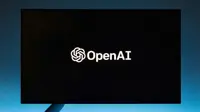India ranks low on inclusive growth, development ranking: WEF
07 Sep 2015
India ranks very low on inclusive growth and development globally on most parameters even as it fares much better in terms of business and political ethics, according to a global ranking of 112 economies by the World Economic Forum (WEF). 
The ranking of different groups of countries in terms of their per capita income levels, the first by the World Economic Forum (WEF), has found that like India, most other countries are also missing major opportunities to reduce income inequalities.
India ranks among countries placed in the bottom half of the 38 countries that make up the lower middle income bracket.
India ranks the lowest in terms of 'asset building and entrepreneurship', in particular the small business ownership, where it ranks at the bottom among its peers at 38th place.
India would need to prioritise improvement in terms of `fiscal transfers', where it ranks 37th out of 38. It also ranks a very low at 32nd for `tax code' and 36th for `social protection,' WEF noted.
However, India does demonstrate leadership in some areas, WEF said, while naming areas like corruption and rents where it comes 8th.
For business and political ethics, India ranks 12th, while it ranks 11th on the financial intermediation of real economy investment pillar, which suggests that money invested in the economy generally gets directed towards productive uses.
China, on the other hand, is delivering better services to its people. Its economy is more than four times the size of India's and on several indicators China is 13 years ahead of India.
The survey uses the basic measure of income and wealth inequality called the Gini index: The higher the number, the more lopsided the income distribution and the larger the gap between the rich and poor.
Using that measure, income equality in India and China (after taxes and government transfers) is similar. Both countries come in at just above 50 on the Gini index, which has a zero to 100 scale.
The US and the United Kingdom both have lower income inequality, with around 35 on the Gini index after taxes and transfer payments, the survey found.
While income distribution and GDP growth indicators in India and China are neck and neck most of the other numbers thrown up by the WEF survey suggest China is doing a much better job of taking care of its population of more than one billion people.
More of China's populace is getting educated, more Chinese citizens are covered by healthcare and that country has a much larger middle class.
Around the world, no bigger policy challenge preoccupies political leaders than expanding social participation in the process and benefits of economic growth. The report, which covers 112 economies, seeks to improve our understanding of how countries can use a diverse spectrum of policy incentives and institutional mechanisms to make economic growth more socially inclusive without dampening incentives to work, save and invest.
The new benchmarking framework introduces over 140 quantitative indicators across seven pillars and 15 sub-pillars:
- Education and Skills Development – access; quality; equity;
- Employment and Labour Compensation – productive employment; wage and non-wage labour compensation;
- Asset-building and Entrepreneurship – small business ownership; home and financial asset ownership;
- Financial Intermediation of Real Economy Investment – financial system inclusion; intermediation of business investment;
- Corruption and Rents – business and political ethics; concentration of rents;
- Basic Services and Infrastructure – basic infrastructure; health-related services and infrastructure; and
- Fiscal transfers – tax code; social protection.
The online report includes comparative country profiles for 112 countries. These are like diagnostic scans of each country's institutional enabling environment as it relates to social inclusion. Countries are able to benchmark their efforts to promote social inclusion relative to peers in each area via a traffic-light scheme. To enable more meaningful comparisons, countries are divided into four groups: advanced; upper-middle income; lower-middle income; and lower-income.
''By giving policy-makers, business leaders and other stakeholders a clearer sense of the extent to which their country is exploiting the available policy space and best practices in relation to its peers, the report aims to make discussions about inequality less about aspiration and more about concrete action,'' Rick Samans, Member of the Managing Board of the World Economic Forum, said.
While all countries have room for improvement, the WEF report noted that there is considerable diversity in performance not only across but also within countries. No country scores above average for its peer group in all 15 sub-pillars and only a few come close.
The report also noted that it is possible to be pro-inclusive and pro-growth at the same time as demonstrated by the fact that several of the strongest performers in the WEF's Global Competitiveness Index also have a relatively strong inclusive growth and development profile.































